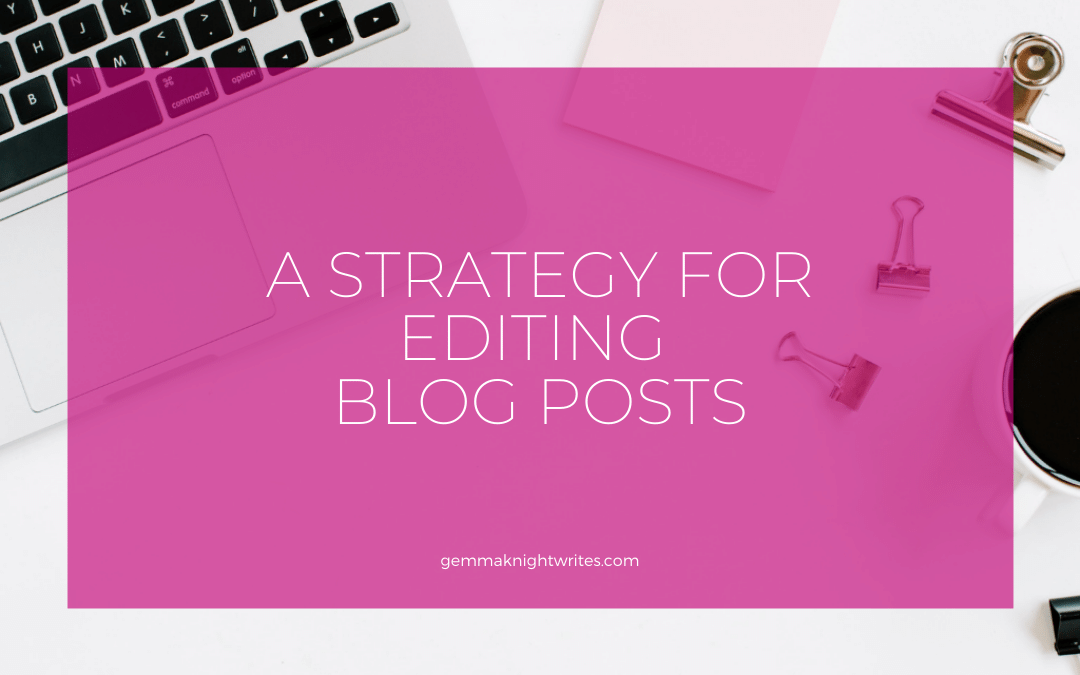After finishing a blog post it can be tempting just to hit the publish button and wait for the likes and comments to start piling-in.
But you can hugely increase the value and quality of your blog posts by taking some time to edit and optimise them.
The editing process shouldn’t take more than a half hour and you can transform your post from something rough and ready to the finished article.
Here’s how to do it…
A Strategy For Editing Blog Posts
Plan What To Write
There are two types of people in this world, planning people and non-planning people.
Both styles work. And often it’s down to personality and preference.
But, in terms of editing more efficiently, planning your blog post can make a massive difference. It means you have a clear idea of what you want to say throughout the writing process. It also means you can organise the narrative to tell a story and make things flow logically.
Let It Sit
As human beings, we have two hemispheres of our brains – a right and a left one.
The right one handles creativity, and it’s what you use while you write. The left one handles analysis – you use this one when you edit.
If you have ever tried writing and editing at the same time, it can feel confusing. That’s because the two hemispheres of your brain are competing. So, don’t try and do the two jobs at once.
After you have written your blog post, let it sit for a while. Allow the right hemisphere to calm down before returning to the piece and engaging the left side.
Take A Step Back
When you are ready to edit your blog post, it’s useful to think of the big picture to see how your post could be adapted to fit your audience’s needs and expectations.
Ask yourself some basic questions, such as does this blog post have a point or benefit my audience in some way? Is there enough juice in it? Am I repeating myself? And are my ideas in the best order?
Go through your piece to correct any errors that you find. Not just spelling or grammatical errors, but problems with flow or missing information too.
Always have your target audience in mind when writing and editing. It is easiest to think of one person in particular. A great who you would like more of. Then, edit and write as if you were speaking to them.
Do An SEO Edit
If you write your blog post for a search engine instead of a reader, it will be obvious to any humans that you are only writing for SEO purposes. Of course, you run the high risk of spoiling the magic of your post.
The funny thing is that this style of writing is also ineffective for search engines as they look for quality and relevance instead of keyword stuffing.
That being said, you still want to check your SEO at the editing stage.
Ask yourself what keywords people would search for to find your post. Consider keywords that people would type into a search engine. For example, if someone was looking for IT solutions, a good keyword could be managed IT services. This might bring up http://www.myit.com/ for instance.
Once you have your keywords, integrate them into your Title, H1 heading, first paragraph, and metadata.
Make Cuts
It can be difficult to cut out sentences and paragraphs you have spent hours crafting. It can also be disheartening to watch the word count of your piece decrease. But it is all worth it if it brings more value to your blog post.
You want your post to be engaging and interesting, and that won’t happen if readers are bored reading long-winded sentences. Make sure your sentences and paragraphs have ‘juice,’ in other words, they have something to hold the reader’s attention.
Don’t be afraid to be ruthless and cut out sentences (or even paragraphs) that don’t add any value to your piece.
Only Do It Once
It can be tempting to edit and edit and edit until you feel like it might be a perfect piece. Not only does that take forever, but it can change the whole essence of what you were aiming to create in the first place.
So, instead of tweaking it again and again, aim to edit the piece once only. That allows you to pick up any glaring errors and still get the piece out the door in a timely fashion.
Remember that it will never be perfect. But, get it 90% of the way there and release it out into the world!
If you would love some more tips on how to create amazing content, then enter your details below and receive great info to your inbox every week!

